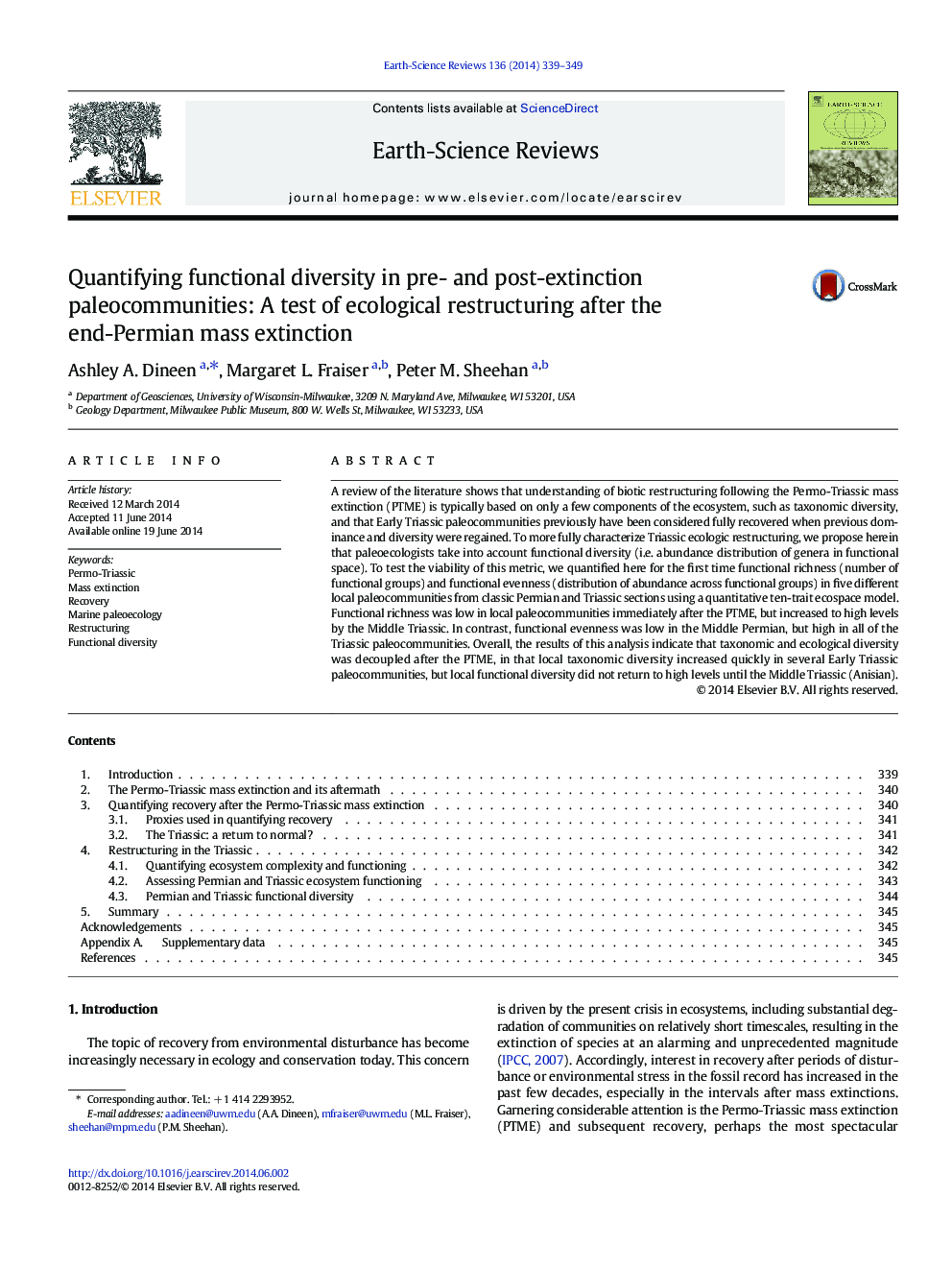| Article ID | Journal | Published Year | Pages | File Type |
|---|---|---|---|---|
| 6443027 | Earth-Science Reviews | 2014 | 11 Pages |
Abstract
A review of the literature shows that understanding of biotic restructuring following the Permo-Triassic mass extinction (PTME) is typically based on only a few components of the ecosystem, such as taxonomic diversity, and that Early Triassic paleocommunities previously have been considered fully recovered when previous dominance and diversity were regained. To more fully characterize Triassic ecologic restructuring, we propose herein that paleoecologists take into account functional diversity (i.e. abundance distribution of genera in functional space). To test the viability of this metric, we quantified here for the first time functional richness (number of functional groups) and functional evenness (distribution of abundance across functional groups) in five different local paleocommunities from classic Permian and Triassic sections using a quantitative ten-trait ecospace model. Functional richness was low in local paleocommunities immediately after the PTME, but increased to high levels by the Middle Triassic. In contrast, functional evenness was low in the Middle Permian, but high in all of the Triassic paleocommunities. Overall, the results of this analysis indicate that taxonomic and ecological diversity was decoupled after the PTME, in that local taxonomic diversity increased quickly in several Early Triassic paleocommunities, but local functional diversity did not return to high levels until the Middle Triassic (Anisian).
Related Topics
Physical Sciences and Engineering
Earth and Planetary Sciences
Geology
Authors
Ashley A. Dineen, Margaret L. Fraiser, Peter M. Sheehan,
